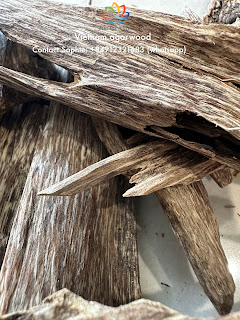Agarwood Mineral Spray is a high-end skin care product, using the essence of agarwood - a rare wood with a characteristic fragrance and many benefits for health as well as skin. This mineral spray is often used to moisturize, soothe the skin and bring a feeling of relaxation.
Benefits of agarwood mineral spray:
1. Deep moisturizing: Helps the skin maintain moisture, especially in dry weather conditions or air-conditioned environments.
2. Soothe and restore the skin: Agarwood has anti-inflammatory properties, helping to reduce redness and irritation.
3. Anti-aging: Containing many antioxidants, mineral spray helps protect the skin from free radical damage and reduce wrinkles.
4. Relax the mind: The gentle, luxurious scent of agarwood brings a pleasant feeling and reduces stress.
5. Enhance brightness: Regular use helps the skin become brighter and more radiant.
How to use agarwood mineral spray:
Shake the bottle well before use.
Hold the bottle about 20-30 cm away from your face and spray evenly all over your face.
Use after washing your face to balance your skin or whenever your skin feels dry and lifeless.
Can be used after applying makeup to keep your makeup longer and create a healthy, shiny effect.
-------------*------------
Xịt khoáng trầm hương là một sản phẩm chăm sóc da cao cấp, sử dụng tinh chất từ trầm hương – một loại gỗ quý hiếm với hương thơm đặc trưng và nhiều lợi ích cho sức khỏe cũng như làn da. Loại xịt khoáng này thường được sử dụng để cấp ẩm, làm dịu da và mang lại cảm giác thư giãn.
Lợi ích của xịt khoáng trầm hương:
- Cấp ẩm sâu: Giúp làn da duy trì độ ẩm, đặc biệt là trong điều kiện thời tiết khô hoặc môi trường máy lạnh.
- Làm dịu và phục hồi da: Trầm hương có tính chất chống viêm, giúp giảm mẩn đỏ và kích ứng.
- Chống lão hóa: Chứa nhiều chất chống oxy hóa, xịt khoáng giúp bảo vệ da khỏi tác hại của gốc tự do và làm giảm nếp nhăn.
- Thư giãn tinh thần: Mùi hương dịu nhẹ, sang trọng của trầm hương mang lại cảm giác dễ chịu và giảm căng thẳng.
- Tăng cường độ sáng: Sử dụng thường xuyên giúp da trở nên tươi sáng và rạng rỡ hơn.
Cách sử dụng xịt khoáng trầm hương:
- Lắc đều chai trước khi sử dụng.
- Để chai cách mặt khoảng 20-30 cm, xịt đều khắp mặt.
- Dùng sau khi rửa mặt để cân bằng da hoặc bất cứ lúc nào cảm thấy da khô và thiếu sức sống.
- Có thể dùng sau lớp trang điểm để giữ lớp makeup lâu hơn và tạo hiệu ứng da bóng khỏe.































